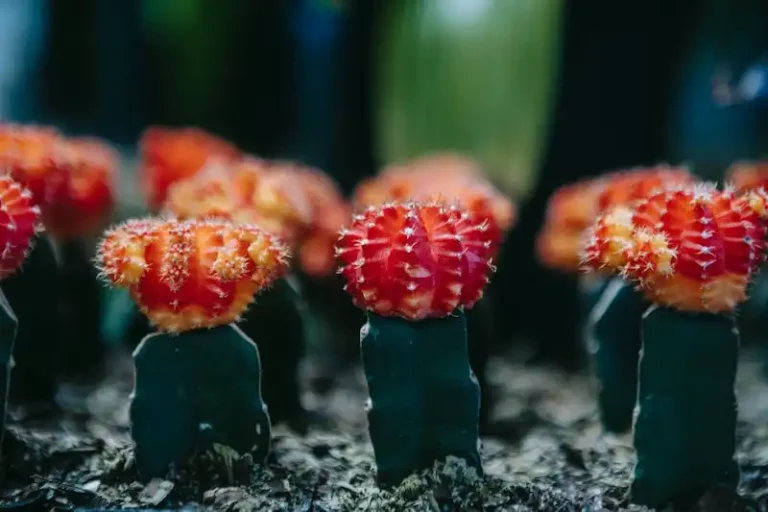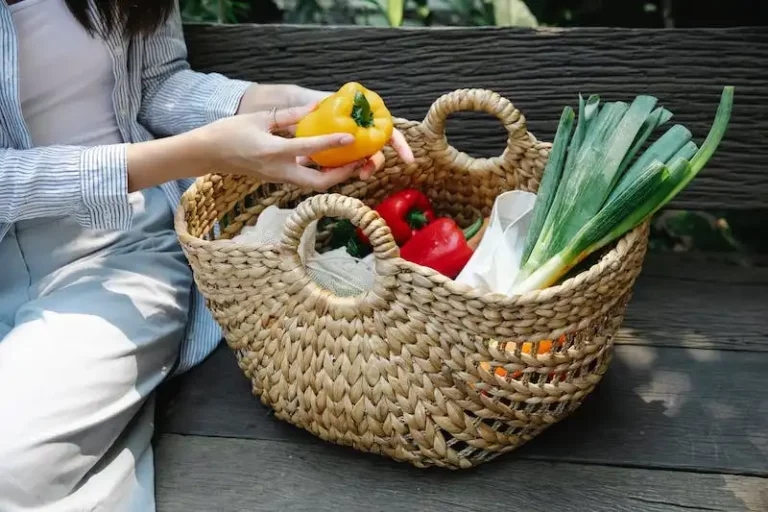Daisies are a favorite among gardeners for their cheerful blooms and easy growing habits. Whether you have Shasta daisies or the native variety, deadheading is a good practice to ensure continuous blooming throughout the season. Deadheading is the process of removing spent flowers from a plant, which encourages more blooms to develop and prolongs the blooming period. In the case of daisies, deadheading also helps to prevent the plant from spreading through the dispersal of seeds.
Knowing how and when to deadhead daisies is important to maintain their health and maximize their blooming potential. The first step is to identify the spent blooms, which are wilted and no longer vibrant in color. Once you locate a wilted flower, trace the stem back to a set of leaves. Make a clean cut just above the leaves using sharp pruning shears or scissors. This step-by-step guide should be followed for each faded or wilted flower you encounter.
It’s important to note that not all daisies require deadheading. Single-flowered daisies, such as Rudbeckia, do not benefit from deadheading and can be left alone. However, many gardeners find that deadheading their daisies not only improves the overall appearance of the plant, but also increases the number of blooms it produces.
“Don’t be afraid to experiment and try different deadheading techniques to see what works best for your daisies,” says gardening expert Jane Washington. “Some gardeners prefer to shear the entire plant once all the blooms have faded, while others go through and selectively remove spent blooms.”
When it comes to deadheading Shasta daisies, it is generally recommended to remove the entire flower head rather than just the petals. This is because Shasta daisies have a double-flower form, and leaving the faded petals on the plant can create a messy appearance. To deadhead a Shasta daisy, simply pinch or snip off the entire flower head at the base where it meets the stem.
If you’re interested in creating a sustainable and bird-friendly garden, allowing some of your daisies to go to seed can be beneficial. Birds love to feast on the seeds of daisies, and by allowing the plants to naturally disperse their seeds, you are providing a valuable food source for your feathered friends.
So, if you want your daisies to continue blooming year after year, be sure to start deadheading them once the blooming season begins. By following a regular deadheading schedule and removing spent flowers, you will not only keep your daisies looking their best, but also promote a healthier and more productive plant.
How to Deadhead Daisies: Ultimate Sustainable Step-by-Step
Deadheading daisies is an environmentally friendly way to improve the look and longevity of these amazing flowers. Not only will deadheading prolong the flowering period, but it will also save those daisy plants from self-sowing and spreading beyond control. Here’s a step-by-step guide to deadheading daisies in the most sustainable way possible:
- Start by looking for daisies that have faded blooms. These are the ones you want to remove to encourage a healthier and more vibrant plant.
- Get a pair of gardening shears or scissors and locate the stem of the faded bloom.
- Position your shears or scissors just above a lateral bud or leaf node.
- Carefully cut the stem at a slight angle to prevent water from pooling on the cut surface.
- Remove the entire faded bloom, making sure to avoid cutting off any healthy leaves or buds.
- If you have a large number of daisies to deadhead, consider using a small bucket or container to collect the removed blooms for composting.
- Continue deadheading daisies as new blooms fade throughout the growing season.
By following the above steps, you will not only improve the overall look of your daisy plant, but also encourage the production of more blooms. Deadheading daisies is an easy and sustainable way to care for these beautiful flowers and keep them thriving year after year.
What to do with the deadheads? If you have a native or wild area where you want daisies to spread naturally, you can simply let the deadheads fall to the ground. The seeds will eventually germinate and new plants will grow. However, if you want to prevent the spread of daisies, it’s best to remove the deadheads and dispose of them in your compost or green waste bin.
So, don’t stress about deadheading your daisies. It’s an easy task that will improve the overall health and appearance of your plants. Start deadheading today and enjoy a longer blooming season filled with beautiful daisy flowers.
For those who love their daisies and want to save seeds for planting next year, the ultimate goal is to let the last blooms of the season fully mature on the plant. As the petals fade and the center of the flower turns brown, you will notice a small seed head forming. Let this seed head dry on the plant until it turns brown and the seeds become visible. Carefully remove the seed head and store it in a labeled envelope or paper bag. When you’re ready to plant in the spring, simply scatter the seeds in a suitable location and let nature take its course.
Daisies come in various types and looks, from the classic white and yellow blooms to crazy large or smaller heads. You can combine different daisy varieties to create a stunning display in your garden or pots. No matter what daisy family is your favorite, deadheading daisies will ensure a longer-lasting and more vibrant display of these beautiful flowers.
Types of Daisies
When it comes to daisies, there are several different types to choose from. Whether you’re looking for a classic daisy or something more unique, there’s sure to be a variety that fits your gardening style. Here are some of the most popular types of daisies:
- Shasta daisies: These daisies, also known as Leucanthemum x superbum, are a popular choice for gardens. They have large, white flowers with yellow centers and are easy to grow. Shasta daisies are perennial plants that bloom for a long season, making them a great addition to any garden.
- Gerbera daisies: These daisies, also called Gerbera jamesonii, are known for their bright and cheerful blooms. They come in a variety of colors, including red, orange, pink, and yellow. Gerbera daisies are often grown as annuals, but they can also be grown as perennials in some regions.
- African daisies: These daisies, also known as osteospermums, are native to South Africa. They have large, colorful flowers that bloom in a variety of shades, including pink, purple, and orange. African daisies are often grown as annuals, but they can also be grown as perennials in warmer climates.
- English daisies: These daisies, also called Bellis perennis, are small, delicate flowers that come in shades of pink, red, and white. They are often grown as perennials and make excellent ground cover. English daisies are perfect for planting in pots and can be easily grown from seeds.
- Paris daisies: These daisies, also known as Argyranthemum frutescens, have beautiful, daisy-like flowers that come in shades of white, pink, and yellow. They are often grown as perennials in larger urban gardens and can withstand a variety of growing conditions.
Each type of daisy has its own unique qualities and benefits. Whether you’re looking for a long-blooming perennial or a colorful annual, daisies are a great choice for any garden. So, why not add some daisies to your garden this season?
How to Deadhead Daisies
Deadheading daisies is a sustainable practice that involves removing spent flower heads from the plants. By deadheading, you can prolong the blooming period of your daisies and ensure a more productive and attractive display.
But why should you deadhead your daisies? The main reason is that it redirects the plant’s energy from seed production to further flower production. If the flowers are left to develop seeds, the plant’s energy is limited, and it will no longer focus on blooming.
When should you deadhead daisies? The best time to deadhead daisies is when the flowers begin to fade or wilt. You can easily identify suitable flowers for deadheading by their withering petals or the appearance of dried seeds. These are the ones you should remove.
So, how does deadheading daisies work? Start by finding the stem just below the spent flower head. Make sure you cut the stem above the first set of leaves. By removing the spent flowers, you stimulate the plant to produce more blooms throughout the growing season.
There are several benefits to deadheading daisies. First, it helps keep the plants looking tidy and well-maintained. Secondly, it prevents the formation of seed bombs that can spread daisy plants where you don’t want them. And finally, deadheading daisies can also be a form of companion planting, as it encourages the growth of other flowering plants nearby.
Another advantage of deadheading is that it improves the overall health of the daisies. By removing spent flowers, you reduce stress on the plant, allowing it to allocate energy to other essential processes like root growth and leaf development.
But what should you do with the deadheaded flowers? You can either compost them or leave them on the ground, as they will decompose and nourish the soil. Leaving some of the flowers in place can also attract beneficial insects and birds to your garden.
In conclusion, deadheading daisies is a simple yet effective way to prolong the blooming period and improve the overall appearance of your daisies. It not only benefits the plants but also contributes to a more environmentally friendly gardening approach. So, the next time you see wilting daisies in your garden, don’t forget to deadhead them!
Remember, deadheading is not required for every daisy plant. Some daisies, like Shasta Daisies (Leucanthemum x superbum ®), produce double or semi-double flowers that do not require deadheading. If you’re unsure whether your daisy plants will benefit from deadheading, consult a gardening guide or follow the advice of experienced gardeners.
How Does Deadheading Daisies Work
Deadheading daisies is a simple process that can greatly enhance the health and appearance of your plants. Whether you have spent years growing daisies or it is your first time planting them, it is important to know how and when to deadhead for ultimate flower power.
Daisies are perennials that are naturally cheerful and a favorite among many gardeners. Their bright and vibrant flowers bring cheerful thoughts and happiness to every garden. However, as with all plants, daisies need proper care and maintenance to ensure their health and longevity.
The goal of deadheading daisies is to remove the fading or withering flowers from the plant. This process helps redirect the plant’s energy from seed production to root and lateral shoot development. By removing the spent flowers, you are not only improving the overall appearance of the plant but also encouraging new growth and prolonged blooming.
So, how does deadheading daisies work? The first thing you need to do is to look for flowers that are past their prime. These faded flowers are a signal that the plant is done blooming and is ready to redirect its energy. It is important to note that not all daisies require deadheading. Some types, such as Engelmann’s daisies, naturally stand their spent flowers, and their seeds attract birds and pollinators.
If you find daisies that need deadheading, follow these simple steps:
- Look for flowers that are fading or withering.
- Shear or pinch them back to the base of the stem.
- Remove the deadheads between the leaves and stems.
- Dispose of the faded flowers in compost piles or discard them in the trash.
By deadheading your daisies, you not only improve their appearance, but you also promote healthier plants and prolong their blooming season. Additionally, removing the faded flowers prevents them from producing seeds and spreading unwanted plants in your garden.
So, if you’re looking to make a difference in the health and appearance of your daisies, make sure to keep up with a regular deadheading schedule. Your daisies will thank you for it with more vibrant and longer-lasting blooms!



